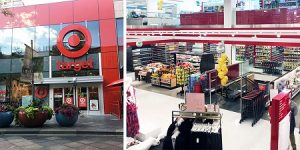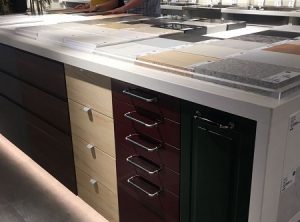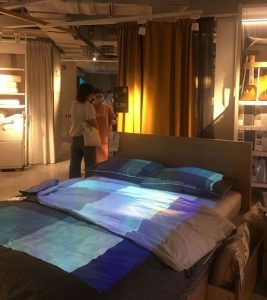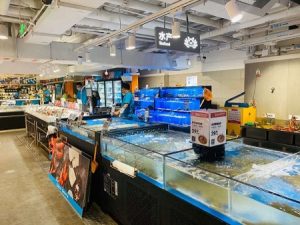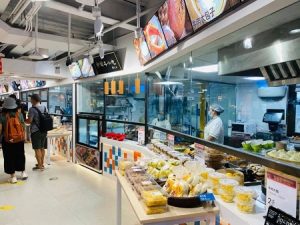This year proved that that even when something unexpected happens in the world that has an effect on the market, brands need to quickly adapt to the new circumstances. The current state of social distancing has forced customers to also adapt by changing their shopping habits: avoid crowds, shop online and use home delivery services.
What is the learning outcome for brands? Firstly, better, more structured omni-channel presence and secondly, improved, more functional brick-and-mortal stores. When it comes to physical stores, brands; just like customers, are looking for a space that can accommodate social distancing and necessary sanitation procedures. Customers are more aware about their shopping experience and how safe they are in the store. A solution for these problems can be one of the upcoming trends from recent years: small-format stores.
What is the Small-Format Store?
Small-format stores are not recent inventions, but they definitely have the potential to come out as the winners of the pandemic situation. These stores first appeared after the great recession in 2008. They recently started to gain more popularity among both retailers and consumers. Big-box brands in the US, like Target and Walmart started opening smaller store formats with limited product selection to adapt to urban requirements and to optimize their portfolios in the world of multi-channel shopping. Having lots of small-footprint outlets in a variety of areas helps brands to reach specific customer groups (university students, families with children or office workers), while maximizing their profitability by only offering a streamlined selection of goods most needed by the core customer segment in each location. Small-format stores are usually 75% smaller than other standard stores of the brand.
Benefit of Small-Format Stores
There are four key advantages of small-format stores:
-
Less expenses, Better pricing: The opening and operational costs of a smaller store are much less than that of a larger store. These cost-savings help contribute to the overall cost of goods within the store. Operational cost-savings from small-format retail enable a brand to match prices of their competitors more freely. Overall price position of goods can also be adjusted between locations.
-
Greater Customization, and Hyper Local Marketing: Multiple store locations allow brands to cater to the specific needs of the local consumers. When retailers identify these needs, they can vary the merchandise in the store to address them. Brands are also able to test out innovative product ideas specifically to a certain customer group without investing in larger, traditional commercial spaces.
-
Improved Accessibility, and Convenience: These small-format stores usually have a strategically important location around residential areas, which provides great accessibility and convenience for their customers. When it comes to convenience the location is not the only great advantage. Smaller shopping area also means easier navigation. The whole shopping experience is smoother, the checkout queues move faster resulting in more people are being served at the time.
-
Omni-channel experience: In the ever changing world of retail having a strong omni-channel presence is a necessity. More and more retailers realize the importance of this and try to use every possible tool to maximize their presence both in the online and offline world. Small stores can support online shopping, in-store pick-ups, easy returns and home delivery very effectively. Instead of having all the products on the shelves, they can be linked to different e-commerce websites and function as regular stores, pick-up and return points. This gives those brands utilizing small-format shops a competitive advantage over retailers who only utilize a 100% online e-commerce system.
Examples from the Chinese Market
IKEA opened their first small-format concept store last month in Shanghai. The new format with its 3,000 m2 total area is much smaller than the IKEA stores we are used to. The store takes into consideration the customer’s working location, shopping methods, and living conditions. It creates a brand new home retail experience integrating shopping, leisure and social interaction. The products are more concentrated, clothing and apparel can be customized. These products are chosen based on the characteristics of the surrounding customer groups. Projectors are placed over the beds to display different duvet patterns so they don’t require addition display area. Due to the limited area and the advanced electronic payment methods, the shopping speed is increased.
Advertisement
Hema has recently introduced their first two Hema mini concept stores in Beijing. If the format turns out to be successful, it will be rolled out and use across the country in order to enter more residential areas. With 800 m2 total area, the size has been significantly reduced. Due to downsizing, the store doesn’t use hanging chain conveyor anymore, but relays mainly on manpower. The types of food they offer for home delivery is also limited compared to the Hema fresh stores but they make sure that the selection is focusing on the basic categories common in the residents’ lives.
As mentioned before, one of the benefits of small-format stores is that brands can test new products, design or technical changes. Carrefour opened their small-scale concept store in Beijing in 2019. The concept store is highly digitalized, with advanced in-store technologies and applications such as “scan and go” facilities and mobile payment.
Small-Format Stores as the Future
After observing the current trends and customer needs, it’s safe to say that ‘bigger’ doesn’t necessarily mean better. Instead of placing more products on the shelves, brands are looking for ways to provide immersive customer experience for their consumers. This can mean customization, digitalization or convenience as well.
The most innovative, forward thinking brands were never afraid to try out new formats, to test and learn, therefore always embracing the future. For these brands, smaller shops provide more flexibility and allow them to be bold and adventurous.
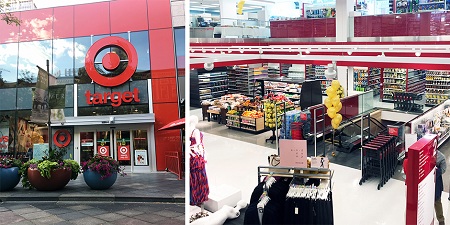

 Photo Gallery1 week ago
Photo Gallery1 week ago
 Headlines4 days ago
Headlines4 days ago
 Headlines1 week ago
Headlines1 week ago
 Headlines2 weeks ago
Headlines2 weeks ago
 Headlines2 weeks ago
Headlines2 weeks ago
 Designer Dozen1 week ago
Designer Dozen1 week ago
 Headlines1 week ago
Headlines1 week ago
 Headlines3 days ago
Headlines3 days ago
